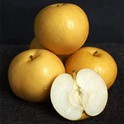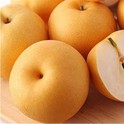As a dedicated supplier of Orange Pear products, I've had the privilege of working closely with these beautiful fruits and their blossoms. Orange and pear blossoms are not only visually stunning but also play a crucial role in the production of high - quality fruits. In this blog, I'll share how I handle orange and pear blossoms to ensure a bountiful and healthy harvest.


Understanding the Importance of Orange and Pear Blossoms
Orange and pear blossoms are the precursors to the delicious fruits we all love. They are the starting point of the entire fruit - growing process. The blossoms are responsible for pollination, which is essential for fruit set. When pollinated successfully, the blossoms develop into fruits. Moreover, the health and vitality of the blossoms can significantly impact the quality and quantity of the final fruit yield.
Monitoring Blossom Development
One of the first steps in handling orange and pear blossoms is careful monitoring. I keep a close eye on the development stages of the blossoms. From the initial bud formation to full bloom, each stage requires specific attention.
Bud Stage
During the bud stage, it's important to protect the buds from adverse weather conditions such as frost. Frost can damage the delicate buds, preventing them from blooming and ultimately reducing the fruit yield. I use protective measures like frost blankets to shield the trees when frost is expected. Additionally, I monitor for any signs of pests or diseases at this stage. Early detection of issues can prevent them from spreading and causing significant damage.
Bloom Stage
The bloom stage is a critical time. This is when pollination occurs. I ensure that there are enough pollinators in the orchard. Bees are the most common and effective pollinators for orange and pear trees. I work with local beekeepers to place beehives in the orchard during the bloom period. The bees visit the blossoms, transferring pollen from one flower to another, which is essential for fruit set.
I also pay attention to the weather during the bloom stage. Rainy or windy weather can disrupt pollination. If the weather is unfavorable, I may consider using artificial pollination methods. This involves collecting pollen from male blossoms and manually transferring it to female blossoms using a small brush or other tools.
Managing Pests and Diseases
Pests and diseases can pose a significant threat to orange and pear blossoms. Common pests that target these blossoms include aphids, mites, and thrips. These pests can damage the blossoms, reducing their ability to produce fruits.
Pest Control
I use an integrated pest management (IPM) approach to control pests. This involves a combination of biological, cultural, and chemical control methods. For example, I encourage the presence of natural predators such as ladybugs and lacewings, which feed on aphids. I also practice good orchard sanitation, removing fallen leaves and debris where pests can overwinter.
When necessary, I use pesticides. However, I am very careful to choose pesticides that are safe for the environment and beneficial insects. I follow all the recommended application rates and safety precautions to ensure that the pesticides do not harm the blossoms or the pollinators.
Disease Management
Diseases such as fire blight and powdery mildew can also affect orange and pear blossoms. Fire blight is a bacterial disease that can cause the blossoms to wilt and turn black. To prevent fire blight, I prune infected branches promptly and disinfect my pruning tools between cuts to prevent the spread of the bacteria.
Powdery mildew is a fungal disease that appears as a white powdery coating on the blossoms. I use fungicides to control powdery mildew, but I also focus on improving air circulation in the orchard by proper pruning and spacing of the trees. This helps to reduce the humidity levels around the blossoms, which can prevent the growth of fungi.
Nutrient Management
Proper nutrient management is essential for the healthy development of orange and pear blossoms. The blossoms require a balanced supply of nutrients such as nitrogen, phosphorus, and potassium.
I conduct soil tests regularly to determine the nutrient levels in the soil. Based on the test results, I apply fertilizers to the orchard. Organic fertilizers such as compost and manure are my preferred choice as they not only provide nutrients but also improve the soil structure and fertility.
During the bloom stage, I also provide foliar fertilizers. Foliar fertilizers are applied directly to the leaves and blossoms, allowing the trees to absorb the nutrients quickly. This can help to boost the health and vitality of the blossoms, increasing the chances of successful pollination and fruit set.
Pruning for Blossom Health
Pruning is an important part of handling orange and pear blossoms. Proper pruning helps to improve air circulation and sunlight penetration in the orchard, which is beneficial for the health of the blossoms.
I prune the trees during the dormant season to remove dead, diseased, or damaged branches. This reduces the risk of pests and diseases and allows the tree to focus its energy on producing healthy blossoms. I also thin out overcrowded branches to ensure that each blossom has enough space to develop properly.
Harvesting and Post - Harvest Handling
Once the blossoms have successfully developed into fruits, it's time for harvesting. The timing of the harvest is crucial to ensure the best quality fruits. I monitor the fruits closely, checking for signs of ripeness such as color, firmness, and sugar content.
After harvesting, I handle the fruits carefully to prevent damage. I store the fruits in a cool, dry place to maintain their freshness. For long - term storage, I use controlled - atmosphere storage facilities, which can extend the shelf life of the fruits.
The Benefits of Our Orange and Pears
Our oranges and pears are known for their exceptional quality. We offer a variety of pear types, including Fresh Pear and Autumn Moon Pear. These pears are not only delicious but also packed with nutrients. They are perfect for eating fresh, making into juices, or using in cooking. If you're looking for the Best Pears For Eating, our selection is sure to satisfy your taste buds.
Contact for Purchase
If you're interested in purchasing our high - quality orange and pear products, I invite you to reach out. We are always ready to discuss your needs and provide you with the best possible service. Whether you're a retailer, a wholesaler, or an individual looking for fresh and delicious fruits, we can accommodate your requirements.
References
- "Fruit Tree Management Handbook" by University of California Agriculture and Natural Resources
- "Pollination in Fruit Crops" by International Society for Horticultural Science
- "Pest and Disease Control in Orchards" by American Phytopathological Society





